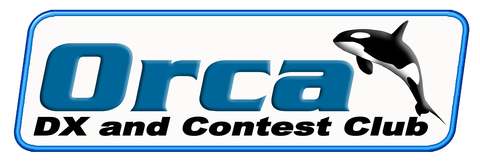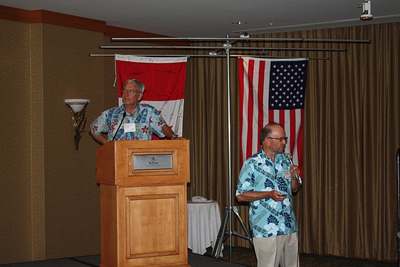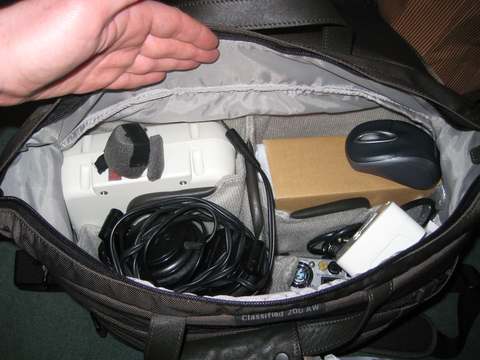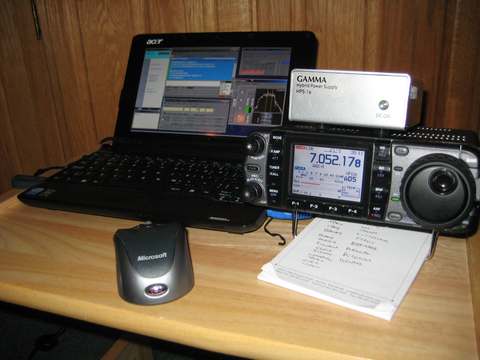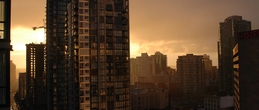It was with great pleasure that I had the chance to operate at Paul W7IV’s station for this year’s CQ WW DX SSB Contest. We operated with Don’s N7BT call in the M/2 category. The team comprised Paul W7IV, Don N7BT, Dick N7RO, Phil VE7YBH, Dean KW7XX, Doyle KC7GX, Gary W7GLC and myself.
This was the biggest contest setup I have been involved with so far and it was an opportunity I could not pass up. Paul’s station is a few mile outside of Bellingham in Washington, just over the border from Vancouver. He has started to build a great station on his lot and already has three towers up with a fourth on the way as I speak.
The main station was an Elecraft K3, a new rig for me but one that I would appreciate immensely toward the end of the contest. Station two was an Icom Pro II, very familiar for me as I’ve honed my contest skills at VE7NSR on a Pro III. We ran 1.5kW on the main station with a Alpha 87a and 1kW from the second station with an Icom IC-PW1.
Another first for me was using WriteLog. I found it a little clunky at first and I missed the better designed bandmap and rate meters that N1MM has but am beginning to appreciate the text entry and editing capabilities.
Tower 1 has a SteppIR MonstIR Beam our main 20 & 40m antenna and a few meters above that, the pride of the station, an OptiBeam 80m 2 element yagi. Tower 2 was a SteppIR 4 element Yagi, this would become our main 10 & 15m beam.
I operated during the daylight hours alongside Paul, Don, Dick and Doyle, taking turns to operate or log. On Friday evening we went head first onto 15m hoping for a run of JA’s that never materialised. Conditions were not optimal and things only became tougher at night though Dean and Phil did manage a decent run of VK’s on 20m and JA’s later on 40m.
On Saturday morning I helped Phil finish his shift logging EU stations and then got a chance to run on the K3 toward Europe. 20m was choc-a-bloc, bloody nuts it was! I decided to start searching for mults and this proved fruitful, upping the scoring with the minimum of Qs. In fact I love searching and pouncing and after nearly two years of low power ops from the condo and VE7NSR I feel it is a skill I have honed well. I also love the K3’s sub receiver, having a second dedicated knob for it is really handy. While trying to bust one pile up you can be easily listening for the next mult.
After a break and some logging time it was back to operate station two on 15m on hopefully a run to Asia. Again the runs were in short supply so picking off the mults from the cluster was the way to go. With Doyle spotting new ones, we got every country and zone we could possibly get into Asia at that time on 15m. Tiring in the evening I gave Phil and Dean a hand as they started out on another tough night on the top bands.
The final day of any of 48hr contest always brings out a sense of urgency and it was no different this time round. From the get go I was in the seat on 20m to Europe getting a few runs here and there and at the same time trying to pick off a few more mults, highlight was 5Z4EE answering my call! Again the K3 is awesome for this, I can be calling on one freq and easily tuning around for new mults on the sub receiver.
For the runs it was a case of finding the minimum of space and just elbowing your way onto a frequency. There is no other way to put it, you need to push your way through the crowd and make room, nobody else going to do it for you. This was the coldest, hardest lesson I learned all weekend.
After lunch I sat and logged with Paul as he worked into Asia on 15m. At last we got the runs I felt we deserved. We worked simultaneously into South America as well, flipping the SteppIR 180 degrees as required, picking off some new zones and mults in the process. The JA’s woke up from their slumber and in the final three hours we clocked 60, 70 and 100 Qs each hour with the rate clock tipping well over 200/hr at times.
We also had VKs and ZLs calling from the side of the beam and worked numerous new mults including Cambodia and Vietnam. The logging was frenetic. Paul would CQ on one frequency and I would observe the spots, check if they were dupes or new mults in the log, stack a few up and pass him the frequencies. He’d line them up on VFO B, work’em and then flip back to the calling frequency. Those last few hours were lots of fun, even if I was only logging! I would happily do that for hours on end if the runs are good.
Highlight of the afternoon was spotting V6B in Micronesia on the cluster. We were working South America at the time, hit 180 on the SteppIR and worked him first time, busting the pile-up as all the ‘big’ east coast continued to struggle…….we had a good chuckle about that one!
Though the guys would admit they had set their sights a little higher we still turned out a good performance for a non-big gun station. Thanks to all the guys for a fun weekend, hopefully the first of many.
Claimed Score (as submitted to 3830):
Summary:
Band QSOs Zones Countries
------------------------------
160: 28 4 3
80: 137 23 35
40: 463 29 63
20: 573 35 106
15: 650 30 88
10: 96 10 16
------------------------------
Total: 1947 131 311 Total Score = 2,259,062
--------------------------------------------------------
-

